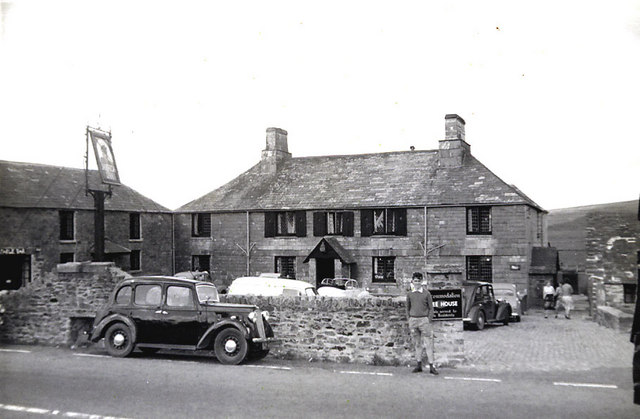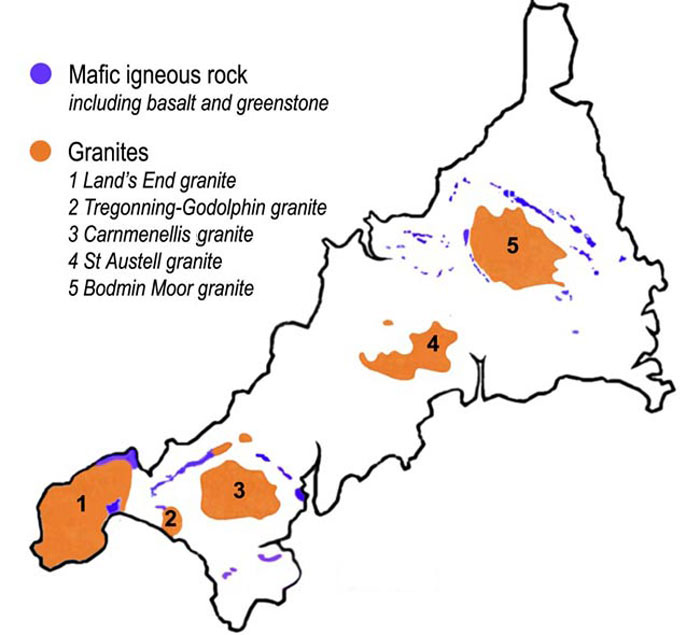|
Bolventor
Bolventor ( kw, Bedhasbold) is a hamlet on Bodmin Moor in Cornwall, England, United Kingdom. It is situated in Altarnun civil parish between Launceston and Bodmin. Toponymy The hamlet has been said to take its name from the "Bold Venture" that it must have appeared to build a farm in this moorland, but this is probably folk etymology, as "Bol-" is a common prefix in Cornish placenames. It is much more likely that the name derives from the 'Bold Adventure' tin-working area which was in operation near Jamaica Inn during the 1840s-1850s Jamaica Inn Bolventor is the location of the famous Jamaica Inn coaching inn. It is bypassed by a dual carriageway section of the A30 trunk road; before the bypass was built the hamlet straddled the A30 road. Daphne du Maurier, a former resident, chose Bolventor as the setting for her novel about Cornish smugglers titled ''Jamaica Inn''. The inn that inspired the novel, Jamaica Inn, has stood beside the main road through the village since 1 ... [...More Info...] [...Related Items...] OR: [Wikipedia] [Google] [Baidu] |
Holy Trinity Church, Bolventor
Holy Trinity Church is a former Church of England church in Bolventor, Cornwall, England, UK. It was built in 1846–48 and served as the parish church of Bolventor until its closure in 1981. The church has been Grade II listed since 1988. History With the formation of Bolventor as a parish in 1846, plans were made for a church capable of accommodating 150 persons.Woolmer's Exeter and Plymouth Gazette – Church building association – 17 July 1847 – page 5 The foundation stone was laid in July 1846 by the church's builder, Francis Rashleigh Rodd of Trebartha Hall and £100 was granted towards its construction by the Exeter Diocesan Church Building Society in 1847. The church, which cost £666 to build, was consecrated by the Bishop of Exeter, Henry Phillpotts Henry Phillpotts (6 May 177818 September 1869), often called "Henry of Exeter", was the Anglican Bishop of Exeter from 1830 to 1869. One of England's longest serving bishops since the 14th century, Phillpotts was ... [...More Info...] [...Related Items...] OR: [Wikipedia] [Google] [Baidu] |
Jamaica Inn
The Jamaica Inn is a traditional inn on Bodmin Moor in Cornwall in the UK, which was built as a coaching inn in 1750, and has a historical association with smuggling. Located just off the A30, near the middle of the moor close to the hamlet of Bolventor, it was originally used as a staging post for changing horses. The high "Tuber" or "Two Barrows" hill, is close by. The inn was the setting for Daphne du Maurier's 1936 novel '' Jamaica Inn'', about the nocturnal activities of a smuggling ring, "portraying a hidden world as a place of tense excitement and claustrophobia of real peril and thrill." In the novel, it was transformed into a rendezvous and warehouse for smuggling that was solely the home of the landlord and his wife. The novel has been adapted into various media, most famously an eponymous 1939 film directed by Alfred Hitchcock. However, the inn itself has never actually been used as a filming location. The inn is also referenced in "Jamaica Inn", a song by Tor ... [...More Info...] [...Related Items...] OR: [Wikipedia] [Google] [Baidu] |
Altarnun
Altarnun ( ; kw, Alternonn) is a village and civil parish in Cornwall, England, United Kingdom. It is located west of Launceston on the north-eastern edge of Bodmin Moor at . The parish of Altarnun includes the village of Fivelanes and the hamlets of Bolventor, Treween and Trewint, and had a population of 976 according to the 2001 census. This increased to 1,084 according to the 2011 census. Other hamlets in the parish are Bowithick, Palmersbridge, South Carne, Tolborough, Lower Tregunnon and Tredaule. The area of the parish is , the largest in Cornwall. By the time of the 2011 census the figures for the ward of Altarnun were provided. This ward contained 48 locations in the area and gave a population of 4,038. The moorland area of the parish is large and lies west of the village towards Rough Tor and southwards towards Dozmary Pool. There is a large conifer plantation at Wilsey Down Forest (Halvana Plantation). The village is in the valley of the Penpont Water and the par ... [...More Info...] [...Related Items...] OR: [Wikipedia] [Google] [Baidu] |
Bodmin Moor
Bodmin Moor ( kw, Goon Brenn) is a granite moorland in north-eastern Cornwall, England. It is in size, and dates from the Carboniferous period of geological history. It includes Brown Willy, the highest point in Cornwall, and Rough Tor, a slightly lower peak. Many of Cornwall's rivers have their sources here. It has been inhabited since at least the Neolithic era, when primitive farmers started clearing trees and farming the land. They left their megalithic monuments, hut circles and cairns, and the Bronze Age culture that followed left further cairns, and more stone circles and stone rows. By medieval and modern times, nearly all the forest was gone and livestock rearing predominated. The name Bodmin Moor is relatively recent. An early mention is in the ''Royal Cornwall Gazette'' of 28 November 1812. The upland area was formerly known as Fowey Moor after the River Fowey, which rises within it. Geology Bodmin Moor is one of five granite plutons in Cornwall that make up par ... [...More Info...] [...Related Items...] OR: [Wikipedia] [Google] [Baidu] |
Holy Trinity Church, Bolventor - Geograph
Sacred describes something that is dedicated or set apart for the service or worship of a deity; is considered worthy of spiritual respect or devotion; or inspires awe or reverence among believers. The property is often ascribed to objects (a " sacred artifact" that is venerated and blessed), or places (" sacred ground"). French sociologist Émile Durkheim considered the dichotomy between the sacred and the profane to be the central characteristic of religion: "religion is a unified system of beliefs and practices relative to ''sacred things'', that is to say, things set apart and forbidden." Durkheim, Émile. 1915. ''The Elementary Forms of the Religious Life''. London: George Allen & Unwin. . In Durkheim's theory, the sacred represents the interests of the group, especially unity, which are embodied in sacred group symbols, or using team work to help get out of trouble. The profane, on the other hand, involve mundane individual concerns. Etymology The word ''sacred'' de ... [...More Info...] [...Related Items...] OR: [Wikipedia] [Google] [Baidu] |
Aviation Accidents And Incidents Locations In England
Aviation includes the activities surrounding mechanical flight and the aircraft industry. ''Aircraft'' includes fixed-wing and rotary-wing types, morphable wings, wing-less lifting bodies, as well as lighter-than-air craft such as hot air balloons and airships. Aviation began in the 18th century with the development of the hot air balloon, an apparatus capable of atmospheric displacement through buoyancy. Some of the most significant advancements in aviation technology came with the controlled gliding flying of Otto Lilienthal in 1896; then a large step in significance came with the construction of the first powered airplane by the Wright brothers in the early 1900s. Since that time, aviation has been technologically revolutionized by the introduction of the jet which permitted a major form of transport throughout the world. Etymology The word ''aviation'' was coined by the French writer and former naval officer Gabriel La Landelle in 1863. He derived the term from t ... [...More Info...] [...Related Items...] OR: [Wikipedia] [Google] [Baidu] |




